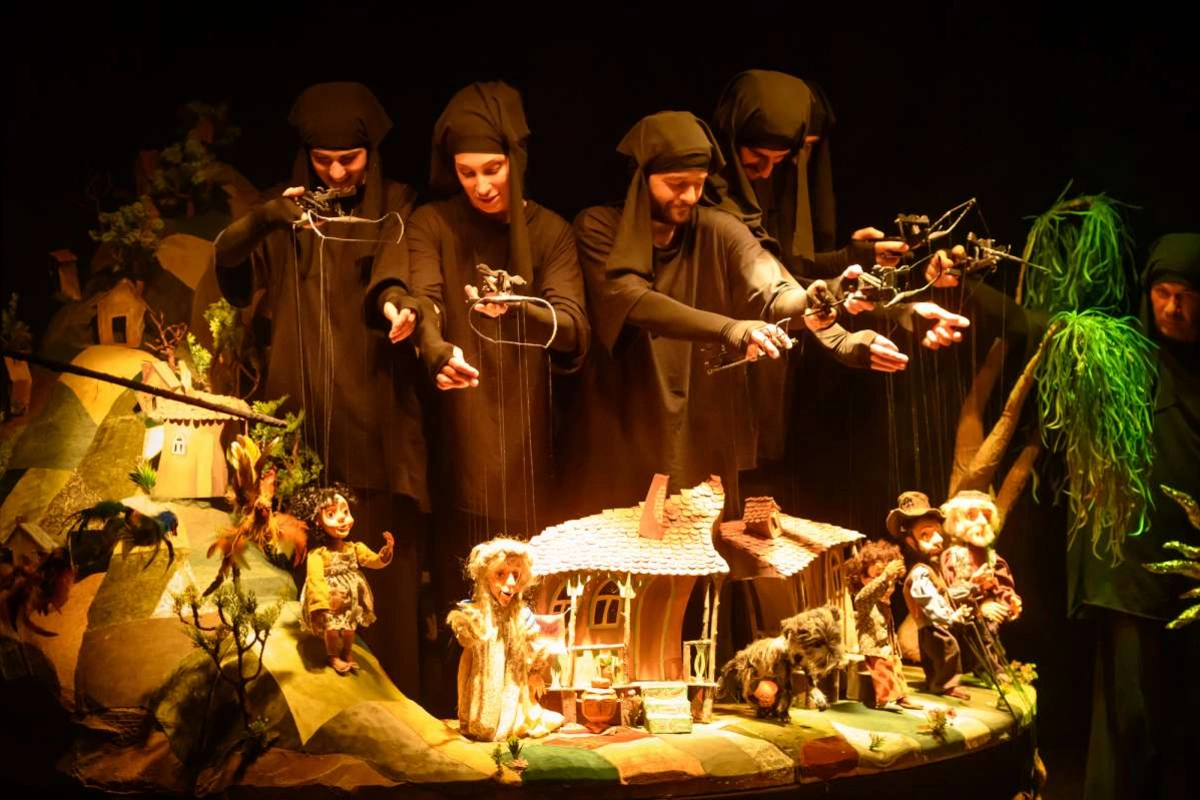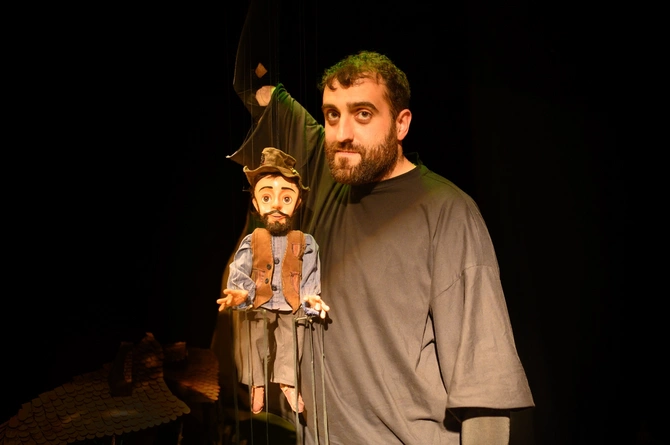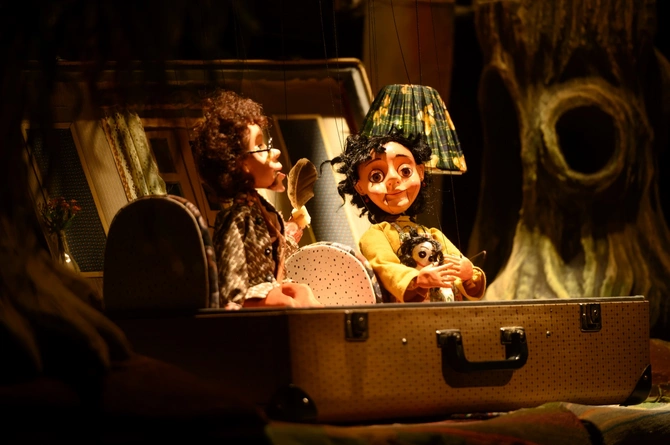
Georgian-Armenian artist, poet, and puppeteer, Armen Hovhannisyan, uses his puppet shows to unite the Armenian, Azerbaijani, and Georgian communities living in the multicultural municipality of Marneuli, Georgia.
All images by Onnik James Krikorian
Marneuli is a rural municipality of southeastern Georgia where 83.5% of the population of around 104,000 is ethnic Azerbaijani, with ethnic Georgians representing only 8.6%. Another 7% are ethnic Armenians. In this multicultural area, Tserakvi is a Georgian village whose annual One Caucasus intercultural music festival has brought Armenian, Azerbaijani, Georgian, and foreign artists, educators, musicians, and architects together since 2014.
Lesser known is the picturesque village of Shahumiani, 16 km from Tserakvi along the same road and just 7 km off the Tbilisi-Yerevan highway. It’s mostly ethnic Armenian, and locals even claim that Russian Foreign Minister Sergey Lavrov, half-Armenian on his father’s side, was either born or raised for a while here, even if official records suggest otherwise. Whether that’s true or not, the village has another more definite claim to fame: meet Armen Hovhannisyan, a talented Georgian-Armenian artist, poet, and puppeteer.

Hovhannisyan has created hundreds of puppets over the years and has showcased his work to admirers at events and exhibitions in Georgia and elsewhere, including at the Sergey Parajanov House Museum in Yerevan, Armenia. “I often visit and perform in the museum,” he says. And in July, supported by the Embassy of the Netherlands in Georgia, Hovhannisyan presented his latest play, Asiya, in the majority ethnic-Azerbaijani town of Marneuli.
“In Marneuli for the premiere of Asyia by brilliant puppeteer Armen Hovhannisyan […] on harmony and diversity in a multi-ethnic village,” Maaike von Koldam, the Dutch Ambassador, tweeted on 13 July, just days before finishing her diplomatic term in Georgia. “The play will go on tour in the region. I hope many children and grown-ups will enjoy it as much as I did.”
Language, of course, remains a problem. Though many ethnic Armenians and Azerbaijanis in the municipality can speak each other’s language, many more do not. Moreover, Georgian language proficiency remains a problem. Therefore, the performances are typically presented in Georgian on one day, and Armenian and/or Azerbaijani on others, reflecting the nationalities that coexist in the Kvemo Kartli region.
"When the audience is mixed, I put on a musical performance so that all nationalities understand and the puppets unite everyone,” says Hovhannisyan.

Asyia is inspired by the fairy tale "The Dog and the Cat" by renowned Armenian writer, Hovhannes Tumanyan. It tells of a dog arriving to a village as an unexpected guest, sparking a series of events that lead to comical misunderstandings with a local cat. However, just as in every fairytale, harmony prevails, and the village thrives in unity. Hovhannisyan also includes a puppet of himself in the play, allowing him to add his own personal commentary.
Hovhannisyan draws inspiration from the works of renowned ethnic Armenian cultural icons such as Sayat Nova and the artist and filmmaker, Sergei Parajanov, whose last film Ashik Kerib, was an interpretation of Mikhail Lermontov’s tale of a wandering ethnic Azerbaijani troubadour.
As an educator, Hovhannisyan extends his passion for puppetry to young minds, transcending regional conflicts and prejudices. He teaches ethnic Azerbaijani students the art of puppetry, encouraging them to express themselves through this unique medium, using the power of storytelling to address pertinent regional issues, all while embracing the spirit of friendship and cooperation.
The Puppet Theatre of Armen Hovhannisyan is a testament to the power of art in fostering unity and understanding among cultures. Through his puppetry, he breathes new life into old fairytales and creates his own. In a region divided by political strife, his puppet theatre stands as a beacon of hope, proving that creativity still has the ability to enchant and unite at a time when it is needed most.
Share on social media